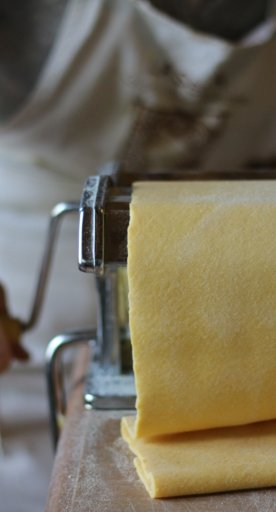

Garfagnana: flavours of a borderland
Some dishes to taste in Garfagnana
The Garfagnana offers different and unusual side of Tuscany, extending from the Lucca hills to the Apennines separating the region from Emilia-Romagna and sheltered from the sea by the Apuan Alps. Criss-crossed by the River Serchio, the area is as beautiful as it is whimsical: “mi costi più del Serchio ai lucchesi”, says an old saying, inspired by the damages suffered over the centuries from the river’s flooding. Garfagnana is a borderland and a place of transit, thanks to which it has long absorbed cultures and traditions from the surrounding areas, ultimately influencing the area’s typical products and cuisine in a unique way, full of both strong and delicate flavours made with poor ingredients. All the traditional recipes are rooted in the lifestyles found in the countryside and mountains, where chestnuts played a vital role. Once dried and crushed, they were transformed into flour and used to make breads and typical sweets: delicious desserts include a chestnut-flour crepe filled with fresh ricotta and a fragrant chestnut polenta.

Garfagnana is also famous for its spelt. This ancient grain as at risk of extinction up until 30 years ago, when it was given a new life. It is the main ingredient in spelt minestrone, made with potatoes, beans and at times chard leaves. It is also eaten with carrots, onions and celery and fried with lard. Spelt flour mixed with soft wheat always makes excellent bread and is as popular as the flour made with the famous eight-columned corn known as ottofile. Ottofile polenta has a unique flavour and can be eaten in its simple form or mixed with mushrooms or a sauce made with meat and lots of cheese. You can also add celery, carrots, leeks, potatoes, beans, black cabbage, tomato puree and lard then fry it: this is known as dipitonca and the final product should be cut into squares.
This corn flour is used to produce a bread called formenton, but the oldest bread in Garfagnana is potato bread, known as garfagnino or panon. Cheese in the area is also unique: Pecorino della Garfagnana and Pecorino delle Colline Lucchesi are made using sheep’s milk and calf rennet and should be eaten either fresh or aged, while Accasciato is made from a mix of sheep’s and cow milk; its name comes from the shape of the cheese after it’s removed from the wrapping cloth. Another delicious product is cold cuts, like mondiola and biroldo, the latter of which is made with the head, lungs, heart, tongue and pieces of lard, all of which are cooked, mixed in blood and spices, and bagged to be boiled: it can be eaten hot or conserved and enjoyed cold.


To go back to the soups, we can’t forget one historic dish eaten throughout the Lucca area but whose roots are in the Garfagnana: garmugia, full of ingredients like vegetables. The name probably comes from “germiglio,” meaning “sprout” in ancient Tuscan, a hint that fresh spring vegetables have always been used to make this soup; though some believe that the name comes from the French “gourmet,” given the influence of the language in this area. The recipe was inspired by farmers’ habit of immediately using the fruits of the land, like artichokes, peas and asparagus. We could also add fava beans, which are cooked in this area unlike the rest of Tuscany, where they’re eaten raw and perhaps with a bit of fresh pecorino. Cooking over the fire was a classic method: this meant that there was always a hearty soup – which was often considered therapeutic – ready at any time of the day, whether eaten among family or offered to guests. In the wealthier families, meat and pancetta was added over the centuries to give a bit of flavour and consistency to the meal. Still today, some people like to enhance this vegetarian dish, while others choose not to eat it with bread or, on the contrary, add either a toasted slice or fried cubes of bread.
Lastly, there are the traditional sweets, like pasimata, made with simple ingredients (flour, sugar, butter, raisins, anise seeds and brewer’s yeast) and left to rise many times. Once upon a time, every family in Garfagnana made this dessert, baking it in wood-fired ovens before bringing it to the church to be blessed on Easter.




































































































